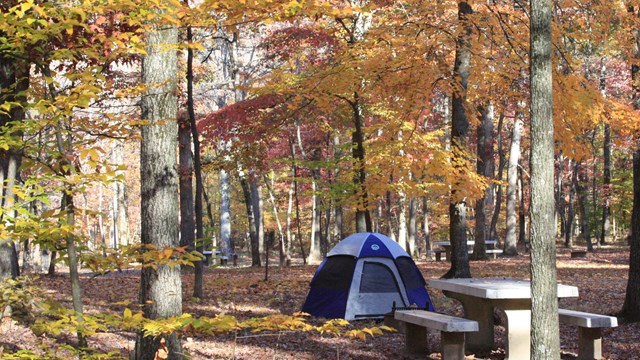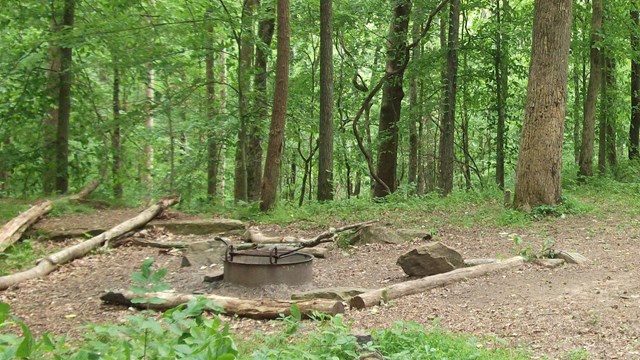
NPS Photo/Sarah Davis Mammoth Cave National Park is an exceptional destination for anyone who loves to see the world from the back of a horse. Riders will find miles of wooded backcountry trails suitable for many skills and ages. The trails range from wide, smooth dirt paths that two riders can travel together, to daring, single file, ridgeline trails. Bringing your horse to the parkTrails60 miles of backcountry trails north of the Green River are open for horseback riding. Trailer ParkingDay-use horseback riders can park trailers at the following trailheads on the north side of the park:
Guided Horseback RidingCommercially guided horseback riding is a great way to explore the park without needing to bring your own horse. Suitable for new riders and beginners, it may even nurture a life-long passion! Camping With Your HorseOvernight horseback riders can use the developed Maple Springs Campground, located 5 miles from the visitor center and 3 miles north of the Green River Ferry.
Specific rules apply to horseback riders using campsites at Maple Springs: Sites 1, 2, 3 and 4 at Maple Springs are designed to accommodate horses. Do not use any of the other Maple Springs Campground sites if you are camping with horses. Park vehicles only at the gravel spaces located at each campsite. If you need additional parking, use the parking area across the road from the bulletin board. Dispose of horse manure by scattering it in the woods at least 200 feet behind the campsites. All manure must be moved from hitching areas to a designated collection area. Picket areas are located behind sites 1, 2, 3 and 4. You must use these facilities to tie up your horses. Never tie horses to trees. The central grassy area is for amphitheater and recreational use only. Do not let your horses use the area. Do not allow your horses near the water spigots in the campground. You must pack water to your horses for drinking or bathing. Water hoses can be attached to water spigots temporarily, but do not leave hoses attached. Horseback riders can utilize several backcountry campsites with a backcountry camping permit. Information about camping in the backcountry and obtaining a permit can be found on Backcountry and Riverside Camping.
Camping regulations apply, as well as several regulations regarding equestrian use: Horses must be tied to hitch posts at backcountry locations where they are provided. In backcountry campsites or any backcountry areas with no hitch posts, or if these are full, horses must be cross-tied so they cannot chew on or otherwise damage trees or other vegetation. Tying horses and pack animals to trees is prohibited. Hobbling horses and pack animals to permit free grazing is prohibited. Cross-tying of horses and pack animals is not permitted within 100 feet from any stream or water source. In backcountry areas with hitch posts, manure must be scattered no less than 100 feet from any campsite area before departing the area. Trail Rules and StewardshipHorseback riders can provide an excellent example to all visitors by following the Seven Leave No Trace Principles as well as these park rules: 
NPS Photo/Sarah Davis
Backcountry SafetyMake sure your ride in the park is a happy one. Learn more about park safety and how to ride and hike smart before your trip in the park. 
Maple Springs Campground
Group campsites, horseback group campsites, and RV campsites just a 10 minute drive from the visitor center. 
Backcountry & Riverside Camping
Rugged undeveloped tent sites, horseback sites, and paddle-in riverside sites. 
Backcountry Trails
Explore over 60 miles of trails on the north side of the park. 
Weather
Upcoming forecasts and what to expect of the weather to help plan ahead for your camping, kayaking, and hiking adventures. 
Camping Regulations
Take time to learn how you can protect Mammoth Cave's campsites while staying in the park. |
Last updated: November 5, 2021
